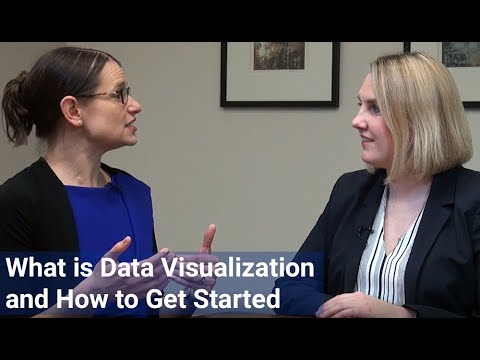What is Data Visualization and How to Get Started

Jen: This is the PKF Texas Entrepreneur’s Playbook. I’m Jen Lemanski, and I’m back again with Danielle Supkis Cheek, a director and one of the faces of our data analytics team. Danielle, welcome back the Playbook.
Danielle: Thank you again.
Jen: So, in this era of technology, and I mentioned in the intro—data analytics. One of the pieces that is data visualization. What are you seeing in that space, and how do you work with clients on that?
Danielle: Yeah, so, data visualization is what sounds like a scary term—people don’t really exactly know what it is—it pretty much is a fancy word for “pictures of graphs.” Just summering up data in a graph or a picture of some sort. A lot of people still seem to be very afraid to start, very afraid of, “What do I need to invest?” and afraid of, “What do I need to do?”
The message we’re trying to get out to people is that you don’t have to be afraid, it doesn’t have to be a big, it can start small, it can start with a small data set that you have and just start building up and finding those nuggets of useful information to show the value of proceeding with the progress and process. And see: is it worth investing in more. What people, I think, are finding the most is that they’re starting to answer their own questions with their own data and then they’re getting in and asking better questions. Then they start asking better questions, they start getting sometimes better information, but sometimes not. And that’s what we’re seeing is the larger scale investments. It’s not so much the actual data monitoring or data visualization program that’s costing so much, it’s the, “Oh I got the taste of data, and I know what I can get. Now I need better data.”
Jen: Yes.
Danielle: And so, getting the better data tends to be the more expensive piece of it, but at that point you’ve already validated that the progress and the process makes sense and you can see the return on investment, because you’re not only getting the improved operational metrics, operational information, but you’re also getting what is a reduced risk of fraud loss and duration of the fraud happening. And so, if you can get to the point where you’re doing a proactive data monitoring program, you’re in the stage where you’re not only getting better operational work, but you’re reducing your operational risks as well due to fraud.
Jen: That’s really cool. Now is it the CFO working with the CEO or the business owner to kind of come up with these metrics and then pull the data, or how does that work?
Danielle: Usually I see when companies start small it’s more of a grassroots effort by somebody that’s just kind of a data jockey type of person that loves just getting into that Excel spreadsheet, convinces somebody to let them go have a tablo license—or Power BI is coming a lot with the Office365 implementations. I think they give you five free licenses for free, so somebody’s just getting a hold of a tool, kind of doing, it’s so easy to teach yourself some of these tools, there are so many resources online.
And the tools of gotten very easy to use, and in Excel, just Excel by itself, before you get to Power Query or Power BI, have so many resources and an ability to do things, you know, with the mapping tool in Excel—is one of my favorite things. You usually find a grassroots effort that somebody just started doing it they show it to somebody, somebody loves it, they want more and it escalates from there.
One of the tricky parts is that accounting data can be a little bit hard to work with. It has some really great features and then it has some really tricky features that if you don’t know how accounting data works, it can be really hard to just conceptually understand what’s happening behind the scenes in a table of data. And so that’s usually where we start getting the phone calls to help get to that next stage where it wants to be a more formalized that CFO-CEO process, but a lot of times they know what they want to see but they don’t know how to mechanically get there and the logic to step it through. So, that’s when we get the phone call once that grassroots effort has shown that this is a really valuable process, and we need to take it up to that C-suite or that business owner level.
Jen: Well, perfect. Well, we’ll get you to talk a little bit more about that soon. Sounds good?
Danielle: Yeah, of course.
Jen: Great. For more information about data analytics and data visualization, visit www.pkftexas.com. This has been another thought leader production brought to you by PKF Texas the Entrepreneurs Playbook. Tune in next week for another chapter.

